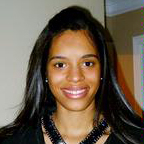Not many summer internships include spontaneous Nerf gun fights. But for senior Kirby Dixon, visual arts major, it wasn’t only entertaining; her summer at Nickelodeon was a chance to learn the ins and outs of a highly-competitive industry. “I’ve always been extremely creative, so I knew I wanted to go the graphics design route,” says Dixon. “I began looking into the RealArts @Penn program and saw they had an application for an internship at Nickelodeon, one of the most popular networks for animated shows. I had always dreamed of doing animation so this was the perfect opportunity.” Before the internship, Dixon was fairly inexperienced when it came to the more technical aspects of design. Luckily, she had just taken her first 3D computer modeling course during the previous semester, which turned out to be a perfect segue into a computer-animated show.
Dixon was placed in the production department of the popular “Kung Fu Panda: Legends of Awesomeness” show, a spin-off of the hugely successful movie franchise. “I worked closely with storyboard artists and character and prop designers,” says Dixon. “I was able to see a script go from the revision stage all the way through the storyboard and animation phase. These were incredible artists from all kinds of different fields and I got to meet with most of them individually to further explore their niche role—it was all about networking.”
Dixon learned many new techniques along the way. One, called “year booking,” involved numbering the characters in any given episode so that when it went through the animation process, the animators would know the specific location and action of each character on-screen. In addition, she worked on “frame counts,” where she examined transitions using show stills, as well as “animatics”—preliminary screenings of storyboards to see how they flow. “It’s a very technical environment, very different from a show like ‘SpongeBob,’ which is 2D and mostly traditional drawing and painting,” Dixon says. “But once you’ve worked in production you notice details that would have never been apparent before.” Dixon was also present for post-production, which meant screening for things like age appropriateness. “We’d ask, is this character a little too scary for kids this age?”
While it may seem like a dream job, Dixon says the industry is also very challenging. Single episodes take months to create and animators often work 12-hour shifts due to constant deadlines. Because the trajectory of the studio depends on trends among young audiences, success is difficult to anticipate. “You never know whether your show is going to continue or if you’re going to be replaced,” says Dixon. “The studio has to try to keep up with the times and premeditate what kids are going to like in two to three years. It’s what makes an animation studio both a really difficult environment to work in, but at the same time extremely exciting.”



